A Day Trip to Dunoon
March 21, 2016 by Scran | 0 comments
Scran paid a visit to Dunoon & it was a grand day out!
The purpsose of our visit was to meet the team of volunteers working with Dunoon Burgh Hall Trust as part of their Pop Up Programme. The Trust is in the midst of an exciting project to reclaim what is one of the town’s most important civic buildings. The 1873 Hall, listed on the Buildings at Risk Register for Scotland, is currently undergoing a major refurbishment and restoration programme. If you are curious to see the before pictures, there are 99 images available via Historic Environment Scotland on Canmore.
Meanwhile the volunteers are not letting the dust settle – they are investigating local heritage and all things relating to the history of this seaside town & the wider Dunoon community. During our visit we were able to show everyone how to access Scran, free of charge using their Argyll & Bute library cards. Together we looked at and discussed a host of collections material, including the day the Waverley ran aground – seen below in 1977. Some of the volunteers remembered it clearly & memories were exchanged. There were other reminiscences too, relating to more controversial events in 1984 when different peace demonstrations took place in Dunoon.
Of course the relationship between Dunoon Burgh Hall Trust & Scran pre-dates this visit. The Trust previously contributed film footage from Holy Loch Heritage – the American Presence a project which aimed to bring to life the 30 year period when the American Naval Base was sited at nearby Holy Loch. We are delighted to say our partnership is set to extend into 2016, when we look forward to sharing more Dunoon ephemera surfacing from the restoration works. To see what’s been lurking under their floorboards, watch this space.
Images © Argyll & Bute Library Information Service, Historic Environment Scotland, The Scotsman, Dunoon Burgh Hall Trust | Licensor Scran





 Copyright and its implications can be a daunting subject. If you work in FE, and would like to find out more about how to use copyrighted materials legally and safely, our friends at the
Copyright and its implications can be a daunting subject. If you work in FE, and would like to find out more about how to use copyrighted materials legally and safely, our friends at the 
















 aturday 19th September 2015. After such a full day in the capital, we stayed local and visited the neighbouring village of Kato Drys. Firstly, we went to the top of Sotira hill, behind Lefkara to get panoramic view across the Larnaca District and surrounding landscape and visited the tiny church perched there. It had some charming icons dating from the early C20th.
aturday 19th September 2015. After such a full day in the capital, we stayed local and visited the neighbouring village of Kato Drys. Firstly, we went to the top of Sotira hill, behind Lefkara to get panoramic view across the Larnaca District and surrounding landscape and visited the tiny church perched there. It had some charming icons dating from the early C20th.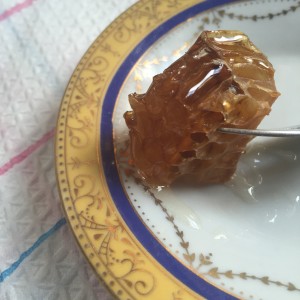



 We made an early morning visit to the silversmiths in Lefkara and learned about their processes, which are mostly mechanised but involved all sorts of materials, rubber, wax, plaster and of course silver. The workshops were very interesting but we could not linger. Adriana had to get us to the airport for our incredible journey home to Glasgow, via Stansted. I’m glad to say on our way to Paphos she took us to see Aphrodite’s Rock, the ideal way to say goodbye & ευχαριστώ
We made an early morning visit to the silversmiths in Lefkara and learned about their processes, which are mostly mechanised but involved all sorts of materials, rubber, wax, plaster and of course silver. The workshops were very interesting but we could not linger. Adriana had to get us to the airport for our incredible journey home to Glasgow, via Stansted. I’m glad to say on our way to Paphos she took us to see Aphrodite’s Rock, the ideal way to say goodbye & ευχαριστώ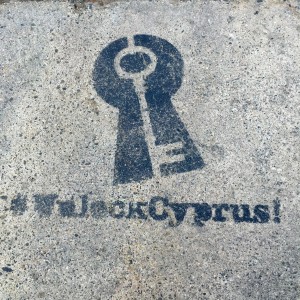 earing the capital city of Cyprus I was surprised to see a giant Turkish Cypriot flag painted onto the side of the Kyrenia Mountains – what a statement. Following the conflict of 1974, the Turkish Republic of Northern Cyprus TRNC became a self-declared state, however it is only recognised by Turkey. The political and military dispute in Cyprus remains unresolved and the island continues with life, divided. The Green Line runs 112 miles from east to west across the island, splitting families, property and communities.
earing the capital city of Cyprus I was surprised to see a giant Turkish Cypriot flag painted onto the side of the Kyrenia Mountains – what a statement. Following the conflict of 1974, the Turkish Republic of Northern Cyprus TRNC became a self-declared state, however it is only recognised by Turkey. The political and military dispute in Cyprus remains unresolved and the island continues with life, divided. The Green Line runs 112 miles from east to west across the island, splitting families, property and communities.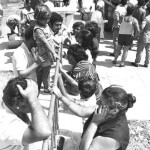
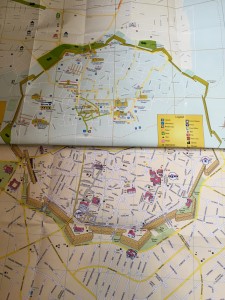 Nicosia is a vibrant & sophisticated city, with a buzz in the streets. Trendy shops & coffee houses lined the artists’ quarter. After a little pick-me-up in the form of some Cyprus coffee, μέτριο for me please, we neared the Green Line. Passports at the ready we crossed over to the north side of the city through two sets of border control, Greek & Turkish. It was easy enough the pass through, plenty of tourists and locals alike were going to & fro. Yet, CCTV was evident, uniformed armed guards were on duty & signage warned us that photography was strictly forbidden in this narrow
Nicosia is a vibrant & sophisticated city, with a buzz in the streets. Trendy shops & coffee houses lined the artists’ quarter. After a little pick-me-up in the form of some Cyprus coffee, μέτριο for me please, we neared the Green Line. Passports at the ready we crossed over to the north side of the city through two sets of border control, Greek & Turkish. It was easy enough the pass through, plenty of tourists and locals alike were going to & fro. Yet, CCTV was evident, uniformed armed guards were on duty & signage warned us that photography was strictly forbidden in this narrow


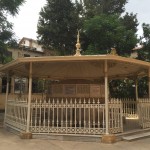
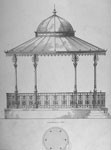
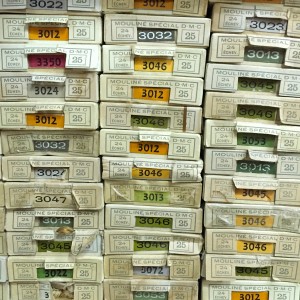 Not only is she a successful businesswoman, but Senaye also works on bi-communal projects, using craft to bring together Cypriots from both sides of the divide and trains up young apprentices too. Thereby generating hope for the future and breaking down barriers. Later we visited the amazing Yagcioglu haberdashery, which stocked the all-important
Not only is she a successful businesswoman, but Senaye also works on bi-communal projects, using craft to bring together Cypriots from both sides of the divide and trains up young apprentices too. Thereby generating hope for the future and breaking down barriers. Later we visited the amazing Yagcioglu haberdashery, which stocked the all-important 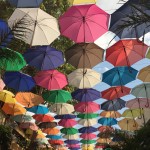

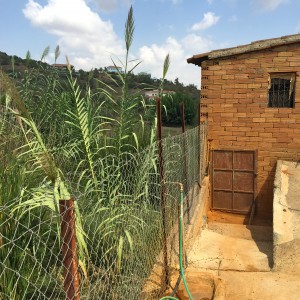

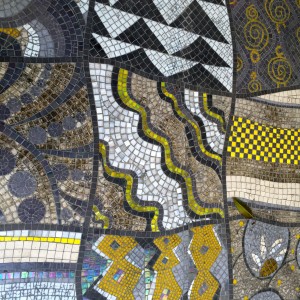
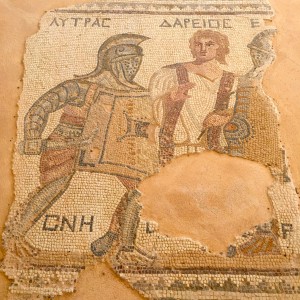
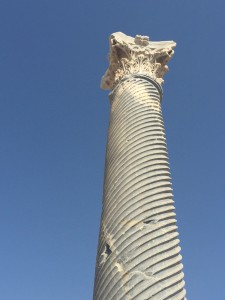



















 Tuesday 15th September 2015. Our all-female, party of five had travelled from Scotland. The group consisted of heritage & education professionals with definite interests museum practice, interpretation, learning and community engagement. Although, through the week other interests & skills would surface as we got to know each other.
Tuesday 15th September 2015. Our all-female, party of five had travelled from Scotland. The group consisted of heritage & education professionals with definite interests museum practice, interpretation, learning and community engagement. Although, through the week other interests & skills would surface as we got to know each other.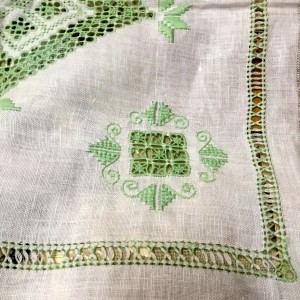 The village & surrounding area is renowned for it’s lace making, so much so, in 2009 it was recognised by UNESCO. Lefkara laces or Lefkaritika was added to the list of the
The village & surrounding area is renowned for it’s lace making, so much so, in 2009 it was recognised by UNESCO. Lefkara laces or Lefkaritika was added to the list of the  Here we were welcomed with some homemade traditional lemonade & shown a wealth of Lefkaritika as well as locally made silver jewellery. I had not seen the lace in reality before and there was no doubt that Lefkaritika was indeed beautiful. The pieces on offer were mostly traditional & could be considered old fashioned by some, however the lace is labour intensive to produce and requires years of skill to become a proficient maker. The lace makers of Lefkara are traditionally women, who learn the art from their mothers & grandmothers. Sadly this knowledge of applying cotton thread to linen is being lost as the population shifts away from Lefkara and other socio-economic pressures increase on Cypriot life.
Here we were welcomed with some homemade traditional lemonade & shown a wealth of Lefkaritika as well as locally made silver jewellery. I had not seen the lace in reality before and there was no doubt that Lefkaritika was indeed beautiful. The pieces on offer were mostly traditional & could be considered old fashioned by some, however the lace is labour intensive to produce and requires years of skill to become a proficient maker. The lace makers of Lefkara are traditionally women, who learn the art from their mothers & grandmothers. Sadly this knowledge of applying cotton thread to linen is being lost as the population shifts away from Lefkara and other socio-economic pressures increase on Cypriot life.
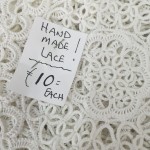
 aware of the power and impact of certain colour schemes. We were informed the homes with blue doors, shutters & window frames, were those of Greek Cypriots whereas the homes with green paintwork, were those of Turkish Cypriots, some of which were unoccupied. In the same vein, many doors had knockers in the shape of a woman’s hand. These would be referred to as the hand of Mary or the hand of Fatima depending on whether it was a Greek Cypriot Christian or Turkish Cypriot Muslim home respectively. Amongst the numerous Greek Orthodox churches in Lefkara we visited the impressive & ornate 14th Century Timios Stavros church. Further down the hill we also admired the derelict, but well maintained, mosque. It quickly became apparent to me that impact of history, politics and conflict was visible everywhere. As a visitor it was plain to see Lefkara is one village, with two distinct communities linked through many common threads.
aware of the power and impact of certain colour schemes. We were informed the homes with blue doors, shutters & window frames, were those of Greek Cypriots whereas the homes with green paintwork, were those of Turkish Cypriots, some of which were unoccupied. In the same vein, many doors had knockers in the shape of a woman’s hand. These would be referred to as the hand of Mary or the hand of Fatima depending on whether it was a Greek Cypriot Christian or Turkish Cypriot Muslim home respectively. Amongst the numerous Greek Orthodox churches in Lefkara we visited the impressive & ornate 14th Century Timios Stavros church. Further down the hill we also admired the derelict, but well maintained, mosque. It quickly became apparent to me that impact of history, politics and conflict was visible everywhere. As a visitor it was plain to see Lefkara is one village, with two distinct communities linked through many common threads.
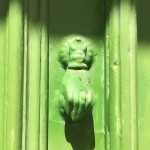


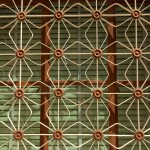

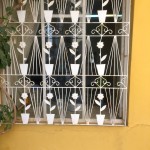


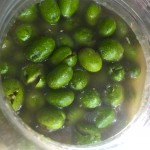 Our evening meal was prepared for us by our second host, Panayiota Demetriou local resident of the neighbouring village of Kato Drys. We observed the lighting of the customary Cyprus outdoor oven, a selection of dishes including tavas was put in & the domed oven was then sealed with clay for several hours of slow cooking. The results were delicious & served us well as a welcoming feast.
Our evening meal was prepared for us by our second host, Panayiota Demetriou local resident of the neighbouring village of Kato Drys. We observed the lighting of the customary Cyprus outdoor oven, a selection of dishes including tavas was put in & the domed oven was then sealed with clay for several hours of slow cooking. The results were delicious & served us well as a welcoming feast.
